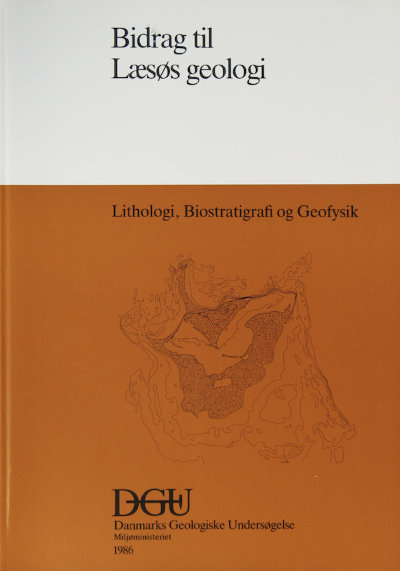Bidrag til Læsøs geologi. Lithologi, biostratigrafi og geofysik
DOI:
https://doi.org/10.34194/seried.v6.7123Keywords:
Skærurnhedeserien, Det yngre Yoldialer, Strandvold, Foraminifer, Georadar, Neotektonik og Den Fennoskandiske RandzoneAbstract
Seven wells have been performed on the island of Læsø in the Northern Kattegat Sea in order to clarify the Quaternary stratigraphy and structure of the island. All wells have been gamme-logged and five wells have been test-pumped. In addition, geoelectrical and electromagnetic (georadar) profiles have been measured. The lithostratigraphy and biostratigraphy of the seven wells show, that the late Quaternary of Læsø can be divided into four units: 1) a lower clay unit, which biostratigraphically is nearly identical with the type-section of the marine late Eemian - early Weichselian Skærumhede Series of Vendsyssel, 2) a sandy unit, which on the basis of reworked Foraminifera is believed to be a Weichselian melt-water deposit, 3) a clayey and silty unit, which biostratigraphically and lithologically corresponds to the marine socalled Younger Yoldia Clay of Vendsyssel, and 4) Holocene, marinesands and beachridges. Unit 3 and 4 is separated by an almost horizontal abrasion surface, which in three wells is developed into a soil profile demonstrating that Læsø was elevated above sea level before the onset of the Flandrian transgressions. In other wells and outcrops the boundary between unit 3 and 4 is covered by a conglomerate of boulders derived from the underlying deposits of various age. Six of the wells have been performed within a distance of a few hundred meter enabling a structural interpretation of the· area of investigation. A correlation of the six wells demonstrate, that the pre-Holocene of Læsø is disturbed by tectonic events, since the same stratigraphical units are found at surprisingly different levels. In three wells the Younger Yoldia Clay is even missing. Thus, the pre-Holocene, including the late Weichselian, marine deposits, may be dipping as much as 4 percent towards the north or northeast. A glacio-tectonical interpretation of this structure would anticipate a new glaciation of Læsø after the deposition of the Younger Yoldia Clay. However, more likely the northward tilting of late Weichselian and older strata is related to a Fennoscandian Border Zone fault, which is crossing Læsø in northwest-southeasterly direction immediately south of the area of investigation. Normal faulting in this fault during late Weichselian and Holocene times would cause northeastwards tilting of the strata within the magnitude as actually found. Moreover, from the georadar profiles the same fault is seen also to affect the almost horizontal boundary between unit 3 and 4, since a four meter jump in the level of the abrasion surface is coincident with the above mentioned fault and an app. 3000 years old sea cliff parallel with the fault. This may explain previous observations on the topography of Læsø, which showed that Læsø is divided in 8 shore-terraces, which after their formation during the last app. 3000 years have been slightly tilted, sometimes slowly towards southwest, and sometimes comparatively rapid towards northeast. Since the general late Weichselian and Holocene isostatic recovery of Scandinavia in this area would result in gradual southwesterly tilting of ancient shore-lines, it is reasonable to suggest the southwestwards tilting of the shore-terraces to be caused by the general isostatic upheaval of Denmark, while the north or northeastwards tilting fases may be caused by normal faulting activity.
Downloads
Published
Issue
Section
License
This article is distributed under a CC-BY 4.0 licence, permitting free redistribution and reproduction for any purpose, even commercial, provided proper citation of the original work. Author(s) retain copyright over the article contents.


